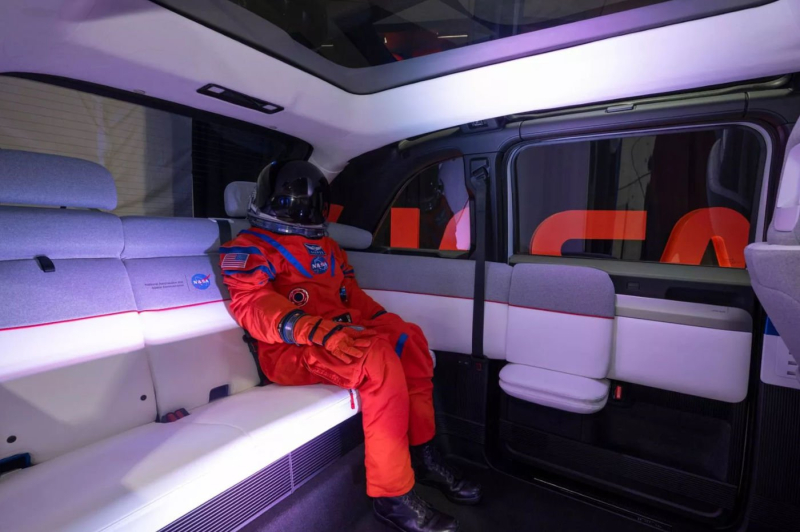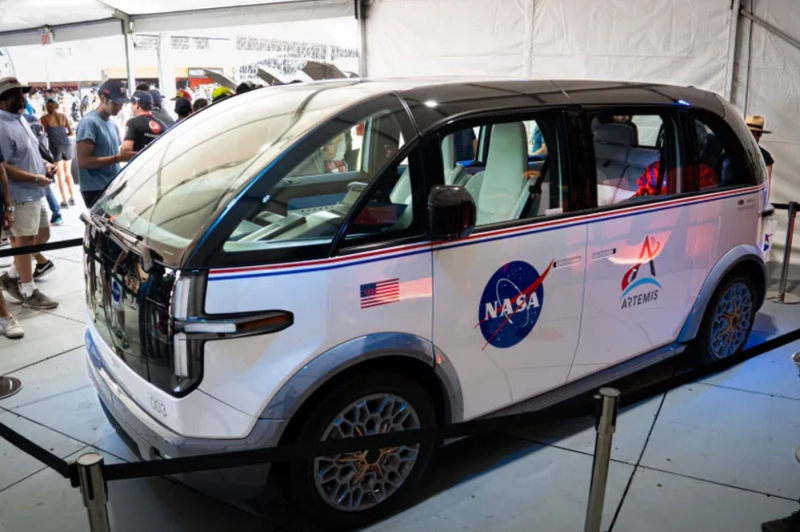
© NASA
NASA has only one goal in mind, its return to the Moon. Since the start of Donald Trump's mandate, the Artemis program (the mythological twin of Apollo) has continued to grow. Despite the change of tenant at the White House, the United States has not deviated from course and still hopes to reach our satellite as soon as possible.

© NASA
An electric car for 14 kilometers
During the United States Grand Prix last weekend, the American space agency made headlines. In the middle of Formula 1, she presented her “homemade” electric car to the public. The latter will play a very specific role in the Artemis program; it must lead the NASA astronauts in charge of the Artemis 2 mission from the launch pad to the rocket. 14 kilometers of roadto mark history and above all make a symbol of the energy change underway, even at NASA.
Built by the Canoo company, this car is not a classic vehicle. It looks more like a futuristic minivan, with a clean white look reminiscent of the interiors of a Tesla. On the four seats, the astronauts will take their places in suits, for their last meters on dry land before a historic week-long journey.
If the design of this electric car is a great demonstration of force on the part of Canoo, NASA subcontractor, we can still wonder why NASA needed to switch order for a brand new electric car if only to travel 14 kilometers (all at a slow speed of between 20 and 40 km/h).
The contract still cost $148,855to the American taxpayer for the production of three cars. That's 3000 dollars and dust per kilometer. To reassure ourselves, we can say that NASA will reuse this brand new car for other trips to the launch pad during the Artemis 3 missions? Thus doubling its mileage.
What is the Artemis program?
To achieve this, three major missions are planned. The first already took place at the end of 2022, it concerned an empty flight of the SLS rocket as well as the Orion module. They both had to prove themselves in the vacuum of space. Now that it’s done, NASA is picking up the pace. We already know the names of the four astronauts who will take their place aboard the Orion module for Artemis 2, in spring 2024.
The American space agency is now preparing the sequel and Artemis 3, with the long-awaited return of Man on the Moon. But unlike Apollo 11, the idea here is to ensure a human presence on the Moon for the long term.
NASA is therefore planning the design of “Gateway” a space station in orbit around the Moon which would take the place of the ISS in the training of Western astronauts. France has already agreed with NASA to have a privileged place in one of the flights to this station, one of our two astronauts, either Thomas Pesquet or Sophie Adenot will therefore have the chance to go as close as possible to our satellite, and perhaps even set foot there one day.
[ ]

